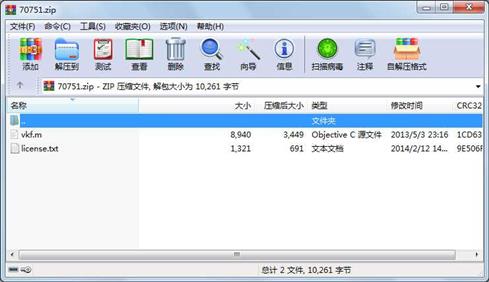资源简介
matlab开发-第二代Voldkalmanderfiltering。利用多阶Vold-Kalman滤波器对信号中的非平稳周期分量进行滤波。

代码片段和文件信息
function varargout = vkf(yfsfpbwmultiorder)
%VKF 2nd Generation Vold-Kalman Order Filtering.
% x = VKF(yfsf) extracts the order with frequency vector f from signal
% y with samplerate fs using a 2-pole filter with a -3dB bandwidth of
% 1 percent of the sample rate. The output is a single waveform x.
%
% [...] = VKF(yfsfp) uses a p-order filter (typically between 1 or 4).
% Every order increases the roll-off by -40dB per decade. By specifying
% additional lower-order coefficients zero boundary conditions are
% added. For instance: p = [2 0 1] applies 2nd order filtering and
% forces the envelope amplitude and its first derivative to zero at t_1
% and t_N.
%
% [...] = VKF(yfsfpbw) uses a bandwidth in Hertz specified by bw. If
% bw is a scalar a constant bandwidth is used; if bw is a vector with
% the same length as y a time-varying instantaneous bandwidth is
% realised.
%
% X = VKF(yfsF...) with [NK] = size(F) performs simultaneous
% extraction of K orders with frequency vectors [f_1...f_K] in array
% F. In case of crossing orders this method tries to reveal the correct
% order amplitudes. The output is an array of K waveforms [x_1...x_K].
%
% X = VKF(yfsFpbw0) switches to a single-order algorithm. K orders
% are still extracted but the single-order algorithm is computationally
% less demanding. This is suggested for high sample rates and/or long
% timeseries.
%
% [ac] = VKF(...) returns the complex envelope(s) a and phasor(s) c
% such that the order waveform(s) can be reconstructed by x = real(a.*c).
%
% [acr] = VKF(...) ouputs an additional selectivity vector r used
% to realise the bandwidth given by bw.
%
% Note: Filter orders > 4 usually result in ill conditioning and should
% be avoided. The filter bandwidth determination was implemented for
% arbitrary order but was not verified for orders higher than 3.
%
% Demo:
% Calling VKF without arguments shows a small demonstration of multi-
% order filtering with two crossing orders in the presence of white
% noise. Note that the demo uses the spectrogram function from the Signal
% Processing Toolbox.
%
% Example:
% fs = 4000;
% T = 5;
% dt = 1/fs;
% t = (0:dt:(T-dt))‘;
% N = numel(t);
%
% % Instationary component
% A1 = [linspace(0.51floor(N/2)) linspace(10.5ceil(N/2))]‘;
% f1 = 0.2*fs - 0.1*fs*cos(pi*t/T);
% phi1 = 2*pi*cumsum(f1)*dt;
% y1 = A1.*cos(phi1);
%
% % Stationary component
% A2 = ones(N1);
% f2 = 0.2*fs*ones(N1);
% phi2 = 2*pi*cumsum(f2)*dt;
% y2 = A2.*sin(phi2);
%
% % White noise
% e = 2*rand(size(y1));
%
% % Mixed signal
% y = y1 + y2 + e;
%
% % Perform VKF on periodic components
% p = 2;
% bw = 1;
% [ac] = vkf(yfs[f1 f2]pbw);
% x = real(a属性 大小 日期 时间 名称
----------- --------- ---------- ----- ----
文件 8940 2013-05-03 15:16 vkf.m
文件 1321 2014-02-12 14:24 license.txt
 川公网安备 51152502000135号
川公网安备 51152502000135号
评论
共有 条评论